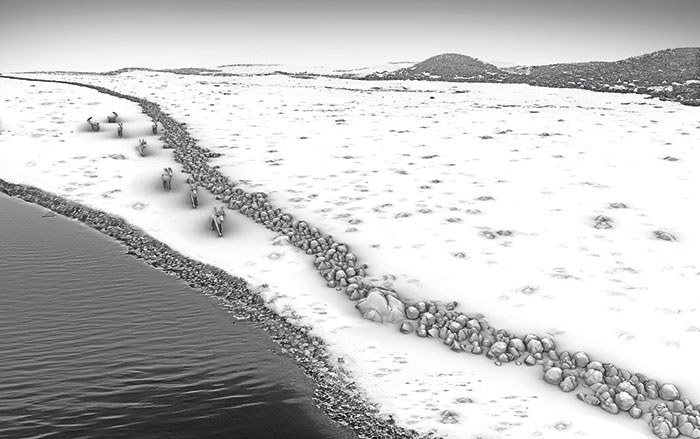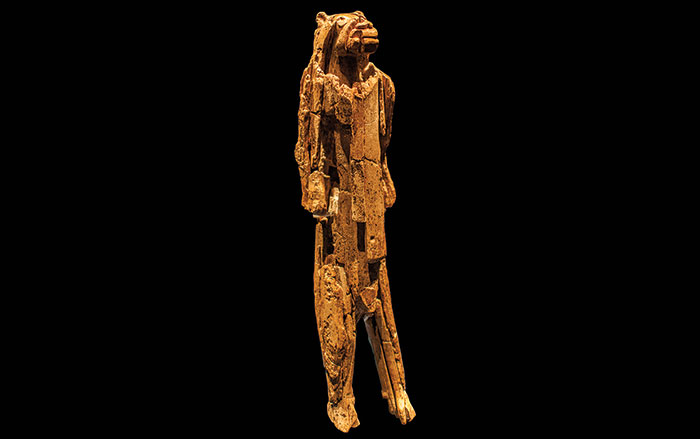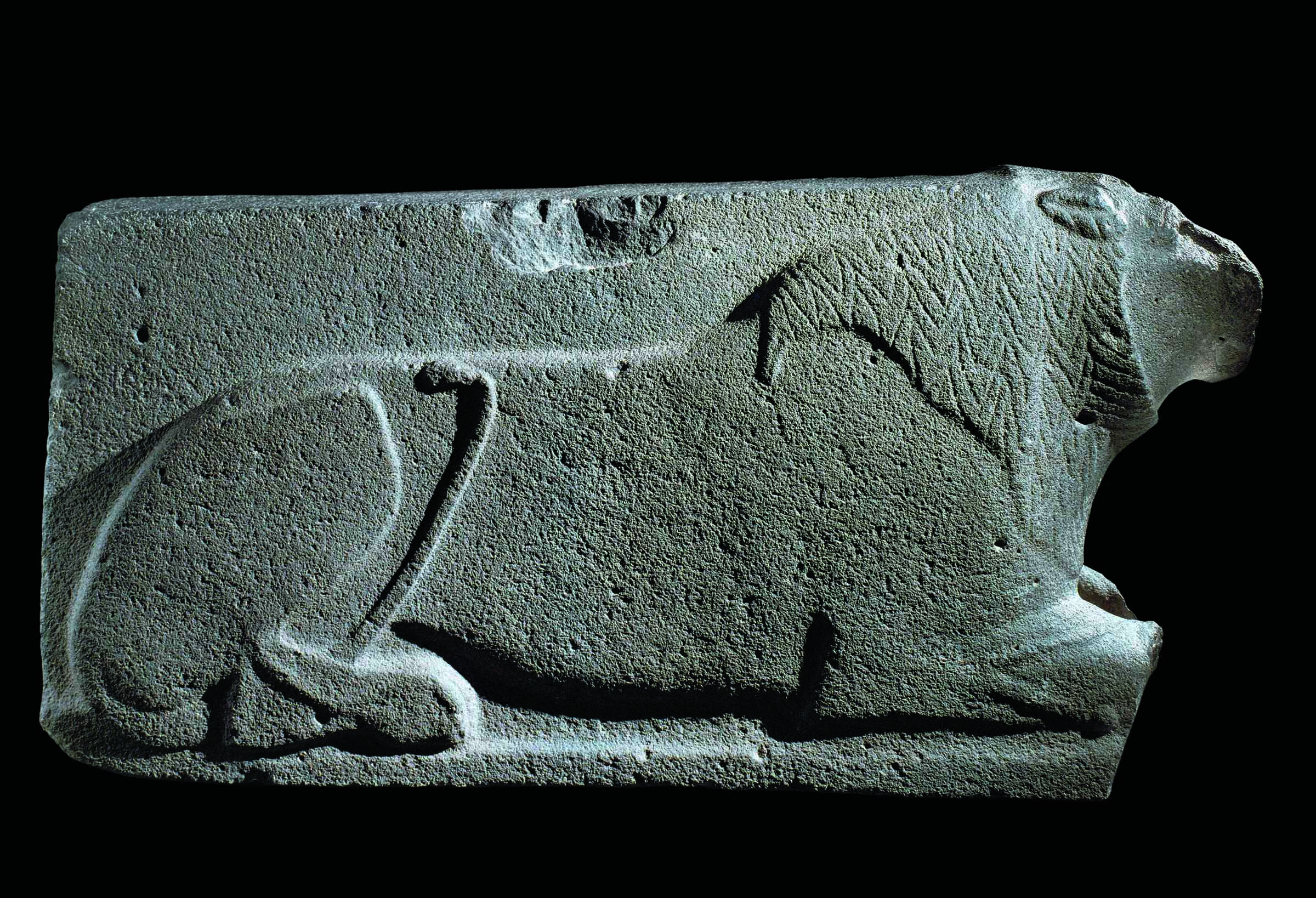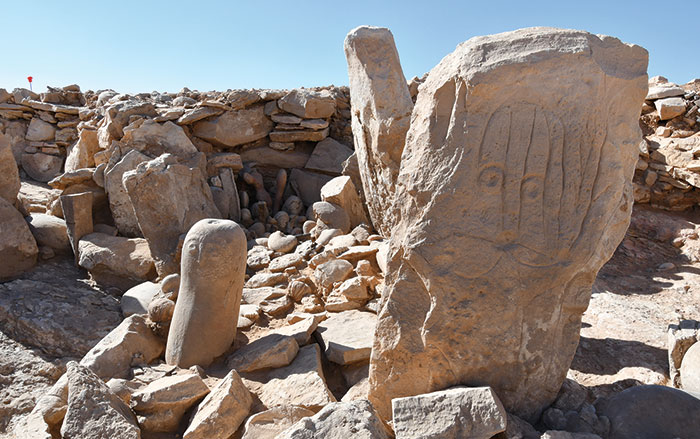
SYRIA: At Tell Kuran there is a 6,000-year-old layer of bones from 100 Persian gazelles. The mound is near a "desert kite," or a stone trap used to drive wild animals together for hunting. Researchers have concluded the gazelles were killed en masse, perhaps an early example of overkill hunting, which wiped out herds, disrupted migration, and led to their local extinction. People at the time relied on livestock for food, so the gazelle slaughter might have had a ritual basis.











